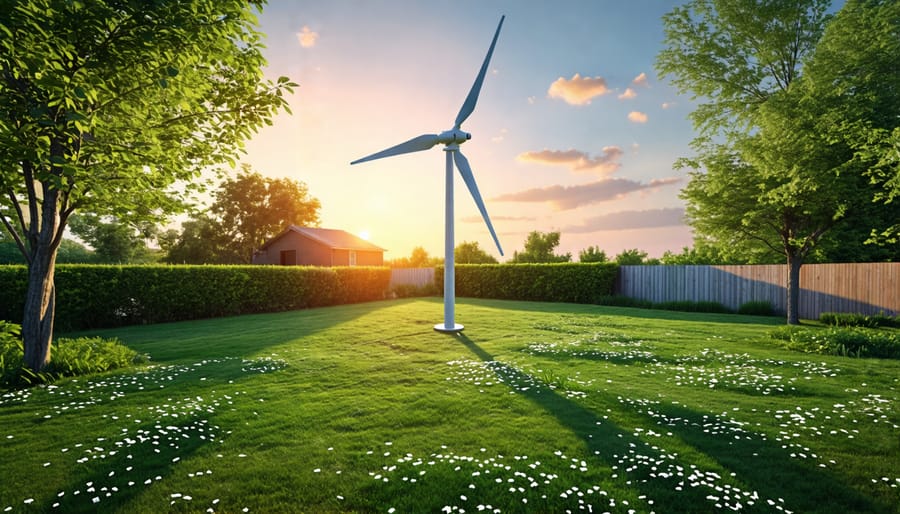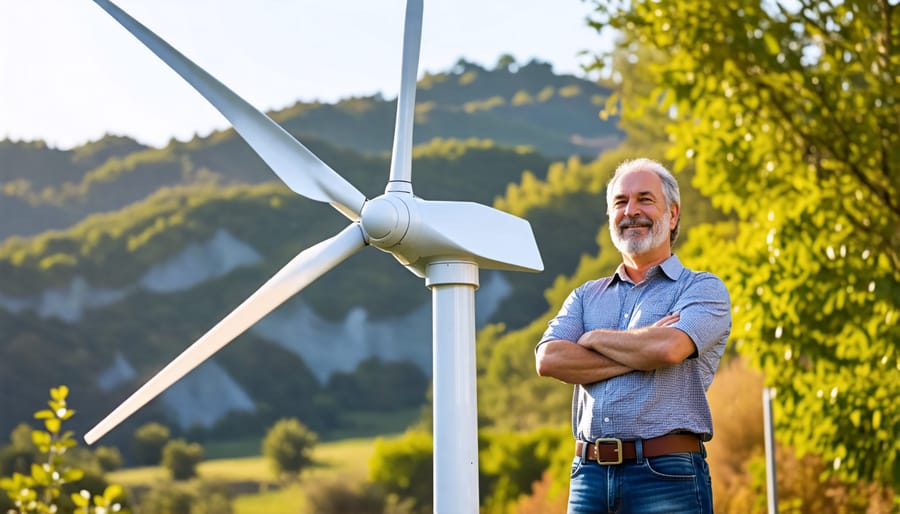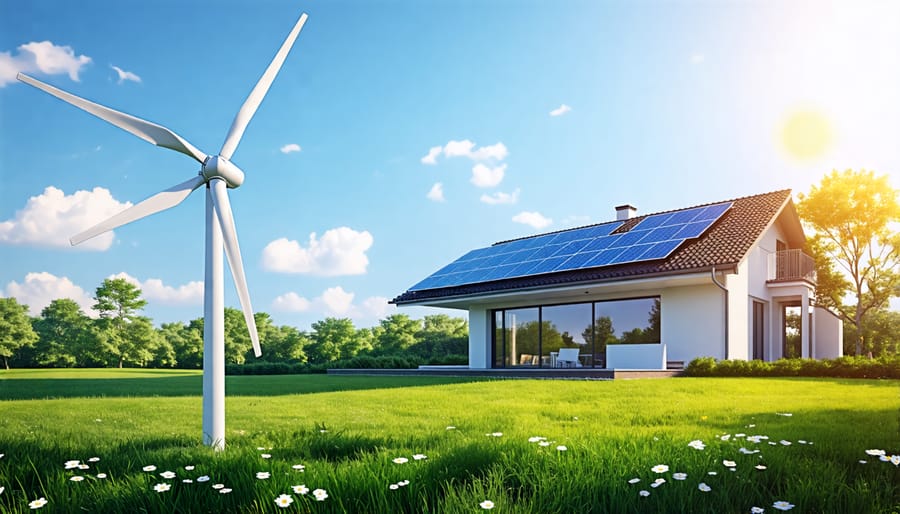Harness the power of the wind and embrace energy independence with small-scale wind turbines for your home. These innovative systems capture wind energy and convert it into clean, renewable electricity, allowing you to reduce your reliance on the grid while minimizing your carbon footprint. With advancements in technology, residential wind turbines have become more efficient, affordable, and accessible than ever before. Whether you live in a rural area with ample wind resources or an urban setting with limited space, there are wind turbine solutions tailored to your unique needs. By investing in a small-scale wind turbine, you not only contribute to a greener future but also enjoy the benefits of lower energy bills and increased self-sufficiency. Join the growing movement of homeowners who are taking control of their energy future and discovering the untapped potential of wind power right in their own backyards.
How Small Wind Turbines Work

Types of Small Wind Turbines
There are several types of small wind turbines suitable for residential use, each with its own unique characteristics and benefits. Horizontal axis wind turbines (HAWTs) are the most common, featuring blades that spin on a horizontal axis. They are efficient, reliable, and well-suited for areas with consistent wind speeds. Vertical axis wind turbines (VAWTs), on the other hand, have blades that rotate around a vertical axis. They are ideal for urban settings or areas with turbulent winds, as they can capture wind from any direction. Micro wind turbines are another option, designed for low-wind environments and smaller energy needs. These compact units can be mounted on rooftops or poles and are often used in conjunction with solar panels for optimal energy wind turbines produce. By understanding the different types of small wind turbines available, homeowners can make informed decisions based on their specific needs and location.
Ideal Conditions for Small Wind Turbines
To achieve optimal performance, small wind turbines require specific conditions. A key factor is wind speed, with most turbines needing an average wind speed of at least 10 mph (4.5 m/s) to generate a significant amount of electricity. Wind speeds can vary greatly depending on location, so it’s crucial to assess your site’s wind resource before investing in a turbine.
Ideal locations for small wind turbines are open areas with minimal obstructions, such as trees or buildings, that can disrupt wind flow. Higher elevations, like hilltops or ridges, often experience stronger and more consistent winds. The turbine should be positioned at least 30 feet (9 meters) above any obstacles within a 300-foot (91-meter) radius.
Other factors to consider include local zoning regulations, which may restrict the height or placement of wind turbines, and proximity to neighbors who might be affected by noise or visual impact. Proper maintenance is also essential to ensure the longevity and efficiency of the system.
Before installing a small wind turbine, it’s advisable to consult with a professional installer who can assess your site’s suitability and help you select the appropriate turbine size and model for your energy needs and budget. With the right conditions and setup, a small wind turbine can be a reliable source of clean, renewable energy for your home.
Benefits of Residential Wind Power
Energy Cost Savings
Installing a small wind turbine can significantly reduce electricity bills by generating clean, renewable energy right on your property. By harnessing the power of the wind, these turbines can offset a portion of your home’s energy needs, lessening your reliance on the electrical grid. The amount of savings depends on factors like wind speed, turbine size, and your household’s energy consumption. In ideal conditions, a well-placed small wind turbine can lower your electricity costs by 50-90%. Over time, these savings can add up, making small wind turbines an attractive investment for eco-conscious homeowners looking to save money while reducing their carbon footprint.
Environmental Impact
Small-scale wind turbines offer significant environmental benefits for homes. By harnessing the power of the wind, these turbines generate clean, renewable electricity without emitting greenhouse gases or pollutants. This reduces reliance on fossil fuels, helping to mitigate climate change and improve air quality. Wind energy is also a sustainable resource that won’t deplete over time, unlike coal or oil. Installing a small wind turbine can decrease a household’s carbon footprint, contributing to a greener future. Moreover, by generating their own electricity, homeowners reduce the demand on the grid, alleviating the need for additional power plants and minimizing the environmental impact of energy production.
Choosing and Installing a Small Wind Turbine
Size and Capacity Considerations
When determining the appropriate size and power output of a small wind turbine for your home, consider your energy needs and available space. Assess your average monthly electricity consumption and wind resources to calculate the required turbine size. Residential turbines typically range from 400 watts to 20 kilowatts, with 1-5 kilowatt models being the most common for households. A professional installer can help you determine the optimal turbine size based on your energy goals and budget. Keep in mind that larger turbines generally produce more electricity but also come with a higher cost of small wind turbines. Your available space and local zoning regulations may also impact the feasible turbine size for your property. By carefully evaluating these factors, you can select a small wind turbine that effectively meets your home’s energy needs while maximizing efficiency and return on investment.
Professional Installation and Maintenance
Installing and maintaining a small wind turbine requires specialized knowledge and skills to ensure optimal performance, safety, and longevity. While it may be tempting to tackle the installation yourself, working with a professional installer can save you time, money, and potential headaches in the long run. A qualified technician will assess your site, recommend the most suitable turbine model, and ensure that the installation meets all local building codes and regulations. Regular maintenance, such as inspecting the blades, checking for loose connections, and lubricating moving parts, is crucial for keeping your wind turbine running smoothly and efficiently. Professional maintenance services can identify and address potential issues before they turn into costly repairs, ultimately extending the lifespan of your investment. By entrusting the installation and upkeep of your small wind turbine to experienced professionals, you can have peace of mind knowing that your renewable energy system is operating at its best while minimizing any safety risks.
Real-Life Success Stories
Meet John and Sarah, a couple from rural Minnesota who installed a small-scale wind turbine on their property. With consistent winds and ample space, their turbine generates enough electricity to power their home and even sell excess back to the grid. “It’s been a game-changer for us,” says John. “Not only are we saving money on our energy bills, but we feel good knowing we’re doing our part for the environment.”
In coastal Massachusetts, retired engineer Mark has been running his home on wind power for over a decade. His carefully designed system, which includes a 5 kW turbine and battery storage, has made his home entirely self-sufficient. “I’ve always been fascinated by renewable energy,” Mark explains. “Implementing my own wind power system has been a rewarding challenge, and I hope my experience can inspire others to do the same.”
These success stories demonstrate the potential of small-scale wind turbines in diverse geographical locations. With proper planning and installation, homeowners can harness the power of wind to reduce their carbon footprint and achieve energy independence. As more individuals embrace this technology, the collective impact on the environment and the energy landscape could be significant.

Conclusion
Small-scale wind turbines offer a promising solution for homeowners seeking to reduce their carbon footprint and embrace renewable energy. As technology advances and costs decrease, these systems are becoming increasingly accessible and efficient. By harnessing the power of the wind, households can generate clean electricity, lower their utility bills, and contribute to a more sustainable future.
While there are challenges to consider, such as zoning regulations and upfront costs, the long-term benefits of small wind turbines are undeniable. With proper planning, installation, and maintenance, these systems can provide a reliable source of energy for years to come. As more homeowners adopt this technology and share their success stories, the potential for widespread adoption grows.
In conclusion, small-scale wind turbines represent a powerful tool in the fight against climate change and our transition to a clean energy future. By considering this option for your home, you can take a proactive step towards reducing your environmental impact and inspiring others to do the same. The future of sustainable living is within reach – it’s time to embrace the wind and build a brighter tomorrow.





